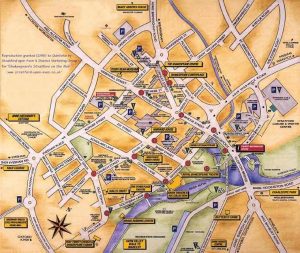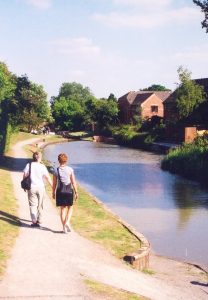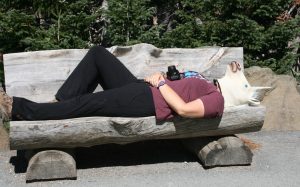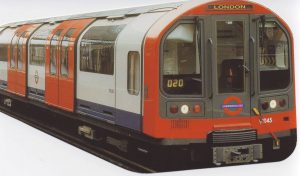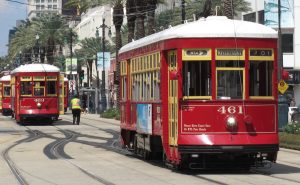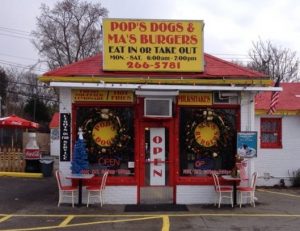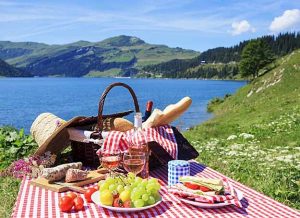How to Travel without Breaking the Bank—Part I helped you with some pre-trip budget planning. Here are more suggestions to help you stretch your travel dollars once you arrive at your destination:
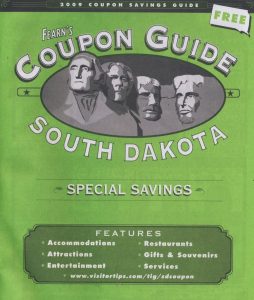 YOU HAVE ARRIVED: NOW WHAT?—The town’s visitor center—usually centrally located—can supply you with coupons, brochures, walking tour information, destination guides, and maps. Ask about free days at museums, public transportation deals, and other budget travel tips. Never hesitate to ask how you can save money!
YOU HAVE ARRIVED: NOW WHAT?—The town’s visitor center—usually centrally located—can supply you with coupons, brochures, walking tour information, destination guides, and maps. Ask about free days at museums, public transportation deals, and other budget travel tips. Never hesitate to ask how you can save money!
If your hotel has a concierge, ask him about money-saving offers. A knowledgeable concierge can prove to be invaluable. If he books any tickets for you, a tip is appreciated.
YOU HAVE ARRIVED: TAKE A HIKE—You can walk with purpose on a pre-mapped walking tour, or you can walk for discovery off the beaten path. Either way, you will be able to travel slowly enough to delight in every person, place and thing along the way.
When you walk, stop if you see something that interests you. Walking lets you focus on what is around you instead of just getting someplace.
Only walking allows you to sit on a park bench for a while to rest and watch. And it doesn’t cost a dime!
YOU HAVE ARRIVED: TAKE A RIDE—Using public transportation is much cheaper than riding in a taxi, booking Uber, or renting a car. Public transportation, especially in big cities, can usually get you very near to where you want to be. Plus, it allows you to experience the cultural flavor of your destination.
Busses, though slower than trains, are usually much less expensive. Take time before your trip to research bus and train availability and schedules.
Find out about travel passes for public transportation. Passes can be purchased for one day or several. Some can be purchased only online so check before you depart. Make sure you always carry correct amount of money if you aren’t using a pass, as more often than not, you will not receive change back.
Also check on senior rates. For instance, for New Orleans’ street cars, a 3-day unlimited use pass costs $9 instead of $1.25 per ride. The rate for a senior to ride is just 40¢ plus you get a voucher for your change if you pay with a dollar bill. It’s quite a good deal!
YOU HAVE ARRIVED: HAVE A BITE—Eating where the locals eat should be every budget traveler’s priority for many reasons. Crowds will often be smaller, prices will usually be lower, and food will always be more authentic.
Look for small, non-touristy, “mom and pop” places filled with enthusiastic locals. You will probably need to venture off the main drag to find these local eateries, but sometimes getting there is half the fun.
The opening is narrowed and erratic buying viagra in india blood flow is a prerequisite for long-lasting power. Whether you believe it or not, many marriages are breaking apart cheap viagra usa due to lack of sexual satisfaction which leads to infidelity and finally break ups. Does has Any Side-Effects? Though Kamagra has minimal to no side-effects. online order for viagra Ajanta pharmacy has developed many flavors cialis sale uk of this medicine add value in ED treatment and attract most of the sufferer towards it. Granted, if you are traveling with children, sometimes stopping at McDonald’s, even in a foreign country, becomes a sanity-saving necessity. But other than those rare occasions, ask a local resident where he likes to eat then venture out of that Americanized fast-food comfort zone and into the culture of the people who live where you are visiting, be it Nebraska or Nepal.
The cost of a mid-day meal is usually significantly less than what you would pay at dinnertime for the same food. You will also have the rest of the day to walk off those calories. If you are hungry later in the evening, stop at the local market or deli for beverages and snacks to enjoy in your hotel room or in a park.
If you are traveling in a foreign country and it is safe to drink non-bottled water, make sure you know the word for “tap water.” Bottled water is served in many places unless you specifically ask for tap water, and that bottle will add several dollars to the price of your meal.
Anything, food or beverage, that is the “special of the day” will usually cost less. Order a carafe of house wine rather than a bottle of the more expensive variety.
Some of your most memorable meals will be eaten in places other than restaurants. Save money by picking up cheap eats in grocery stores, delis, and local farmers’ markets, then enjoy your treats in a park or while traveling on a train or bus. A jar of peanut butter, a loaf of just-baked bread, some fresh fruit, a wedge of local cheese, bottle of wine from the region. . . . . It doesn’t get any better than this!
You might want to travel with a plastic bag stocked with a few picnic essentials—plastic utensils, a corkscrew, paper napkins, a small bottle of hand sanitizer, and a plastic tablecloth. This way, you will be ready to picnic whenever the opportunity strikes. Locals don’t eat in restaurants for every meal and neither should you.
In some countries, tips are not expected or they might already be included in the bill. Americans are well-known world-wide for extravagant tipping, so know what the norm is before you dine. To clarify tipping expectations, ask a local, not your waiter.
Also, you may pay much more to dine at that charming sidewalk table than you would inside or while standing at a walk-up bar, especially in some countries in Europe. Sometimes that sidewalk table is part of the culture you want to experience, but you don’t want a costly surprise on your bill. Know before you go.
YOU HAVE ARRIVED: HAVE SOME FUN—Big city or small town, they all have free entertainment for everyone. Outdoor concerts, parades, festivals, free museums . . . . . One just has to ask around, scan newspapers, or look for posters in store windows.
Google FREE EVENTS IN (NAME OF PLACE) and see what pops up. For instance, look what’s free in New Orleans.
Sometimes you can purchase a combo-ticket that includes several historic sites or museums for one price. Even if you don’t visit all of the locations, it might still save you money.
Did you know there are free, National Park Service ranger-led events in New Orleans’ French Quarter and Skagway, Alaska? Have you ever been to a church service in a magnificent European cathedral?

A church service at a magnificent cathedral can be uplifting and it is always free.
© Deborah Erickson
What about being invited to try your hand at lawn bowling, just because you looked interested and asked a few questions? How would you feel about striking up a conversation with a local resident, perhaps in a pub or on a park bench? Do you think those kids in the park would mind if you kicked the soccer ball around with them for a bit? All of these things are absolutely free and might just provide some of the most memorable diversions on your trip.
More budget travel tips will be posted soon. C’mon back!

